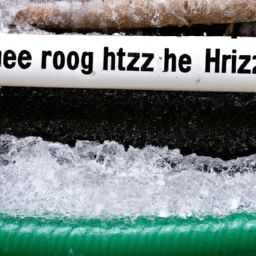What Temp Garden Hose Freeze
What Temp Will Garden Hose Freeze
What Temperature Will a Garden Hose Freeze?
At a glance, a garden hose may appear to be nothing more than an object used to water your garden plants. In reality, garden hoses have a range of useful applications, but you don't want to be left unprepared when temperatures drop. Knowing the temperature at which a garden hose freezes is important for gardeners and other practitioners of outdoor activities.
What Is the Freezing Point of Water?
In order to ascertain the temperature at which a garden hose is most likely to freeze, you must consider the freezing point of water. Freezing occurs when the temperature of liquid drops below zero degrees Celsius (32 degrees Fahrenheit). When this occurs, molecules of liquid will eventually form into ice crystals, which can cause a hose to rupture. The temperature at which a garden hose freezes is generally the same as the temperature at which water freezes.
Factors That Can Increase the Temperature at Which A Garden Hose Freezes
There are certain factors that can increase the temperature at which a garden hose freezes. For example, the presence of impurities, such as dirt, can reduce the temperature at which water turns to ice. A garden hose that has been exposed to the elements, as well as dirt and debris, is less likely to freeze.
The outside temperature is also an important factor when it comes to determining the freezing point of a garden hose. The colder the temperature, the more likely it is that a garden hose will freeze. In addition, the presence of water pressure in the hose can cause the hose to contract and expand, depending on the temperature. This can likewise affect the chances of a garden hose freezing.
Ways to Prevent a Garden Hose from Freezing
Fortunately, there are a number of ways to prevent a garden hose from freezing. One of the most effective methods is to simply keep the hose indoors when temperatures drop. Storing the hose in a shed or other enclosed area can be ideal, as it will protect the hose from the freezing elements.
Another method is to wrap the hose in an insulated material. This material helps to keep the hose warm and reduce the chances of it freezing. You could also wrap the hose in a cloth, such as a towel or tarp, but an insulated material is preferable.
Keep an Eye Out for Signs of Freezing
While the above methods can help to prevent a garden hose from freezing, it is important to keep an eye out for signs of freezing. These signs include a decrease in water pressure, ice on the outside of the hose, and a decrease in water flow. If you detect any of these signs, it is best to move the hose indoors or wrap it in an insulated material.
Conclusion
Garden hoses can be a valuable tool for gardeners and other outdoor activity enthusiasts, but it is essential to be aware of the temperature at which a garden hose freezes. Knowing how to prevent a garden hose from freezing is important for ensuring that the hose remains intact and in good condition. Storing the hose indoors and wrapping it in an insulated material are two of the best methods for keeping it from freezing. It is also important to be mindful of the signs that can indicate that the hose is about to freeze, such as a decrease in water pressure, ice on the outside of the hose, and a decrease in water flow.
Brief Recap
A garden hose is most likely to freeze at 32 degrees Fahrenheit (zero degrees Celsius), which is the same temperature at which water freezes. Impurities, outside temperature, and water pressure are factors that can affect a garden hose's freezing point. Storing the hose indoors and wrapping it in an insulated material are two of the best ways to prevent it from freezing. It is important to keep an eye out for signs of freezing, such as a decrease in water pressure, ice on the outside of the hose, and a decrease in water flow.

Previous Page
Next Page
